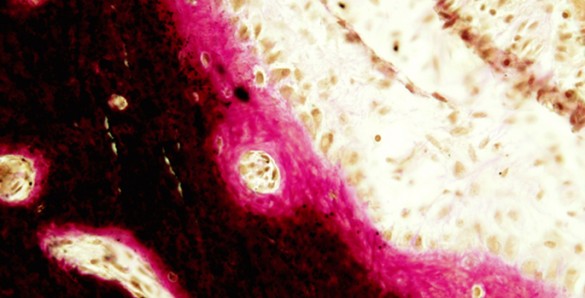Sometimes it makes sense to put the cart in front of the horse.
Such is the case with a research initiative led by Jeffry Nyman, PhD, associate professor of Orthopaedic Surgery and Biomedical Engineering. He and colleagues are developing ways to measure the effect of two drugs already approved by the U.S. Food and Drug Administration. Their work involves devising diagnostic tools to evaluate changes in bone quality.
One drug, asfotase alfa, received FDA approval in 2015 for hypophosphatasia, a rare genetic disorder that prevents bone mineralization. The other drug, trametinib, is a cancer medicine. These two drugs might help children with a genetic disorder, neurofibromatosis type 1 (NF1), which can cause leg bowing and fractures that are difficult to treat. The problem, however, is that not all children with NF1 experience lower leg bowing and fractures, so diagnostic tools need to be developed to identify who is at risk and needs treatment. Methods are also needed to measure the drugs’ effects on bone. The testing will be done in a mouse model of the disorder.
Nyman is the program director and a principal investigator for a $408,211 grant from the National Institutes of Health to devise those procedures. The other principal investigator is Florent Elefteriou, PhD, associate director of the Center for Skeletal Medicine and Biology at Baylor College of Medicine and an adjunct associate professor of Medicine at Vanderbilt.
Elefteriou led a team at Vanderbilt, including Nyman, who previously demonstrated in a mouse model that asfotase alfa improves bone growth, mineralization and strength. But researchers are still trying to understand how mutations in neurofibromin, a protein that regulates cellular signaling pathways, cause skeletal pathologies.
“These fractures typically happen in children very young,” Nyman said. “We might have two drugs to prevent these fractures, but we don’t know which child with NF1 will be affected. It is a problem because the treatments would have to be initiated before their lower leg bends and breaks.”
In the mouse model, proton nuclear magnetic resonance relaxometry will be used to measure matrix-bound water in bone. Raman spectroscopy will measure the amount of mineral relative to bone matrix content. And cyclic reference point indentation will probe the bone to test resilience and tissue stiffness.
“My colleague, Florent Elefteriou at Baylor, when he was here at Vanderbilt, actually developed multiple models of NF1 bone disease,” Nyman said. “He is essentially going to mimic the disease in a way that will affect the bone and then send me the tissues at different time points.”
Neurofibromatosis (NF) is a group of diseases that predisposes people to cancerous tumors and developmental, bone and cardiovascular disorders. The most common form, NF1, is typically diagnosed in childhood and continues to affect people throughout their lives.
The Vanderbilt-Ingram Cancer Center Neurofibromatosis Clinic at Vanderbilt University Medical Center is one of only 50 that are part of the Children’s Tumor Foundation NF Clinic Network.















